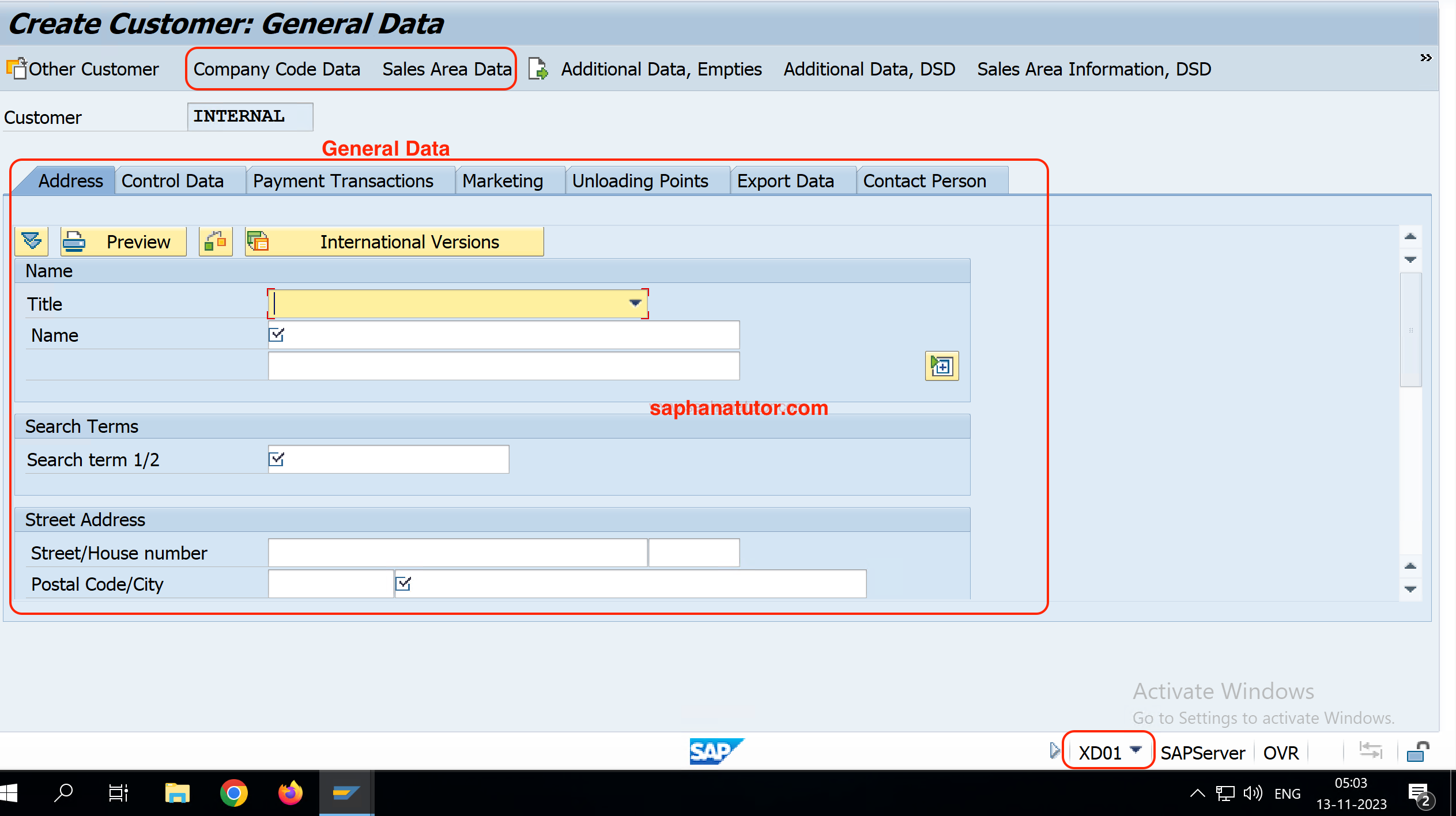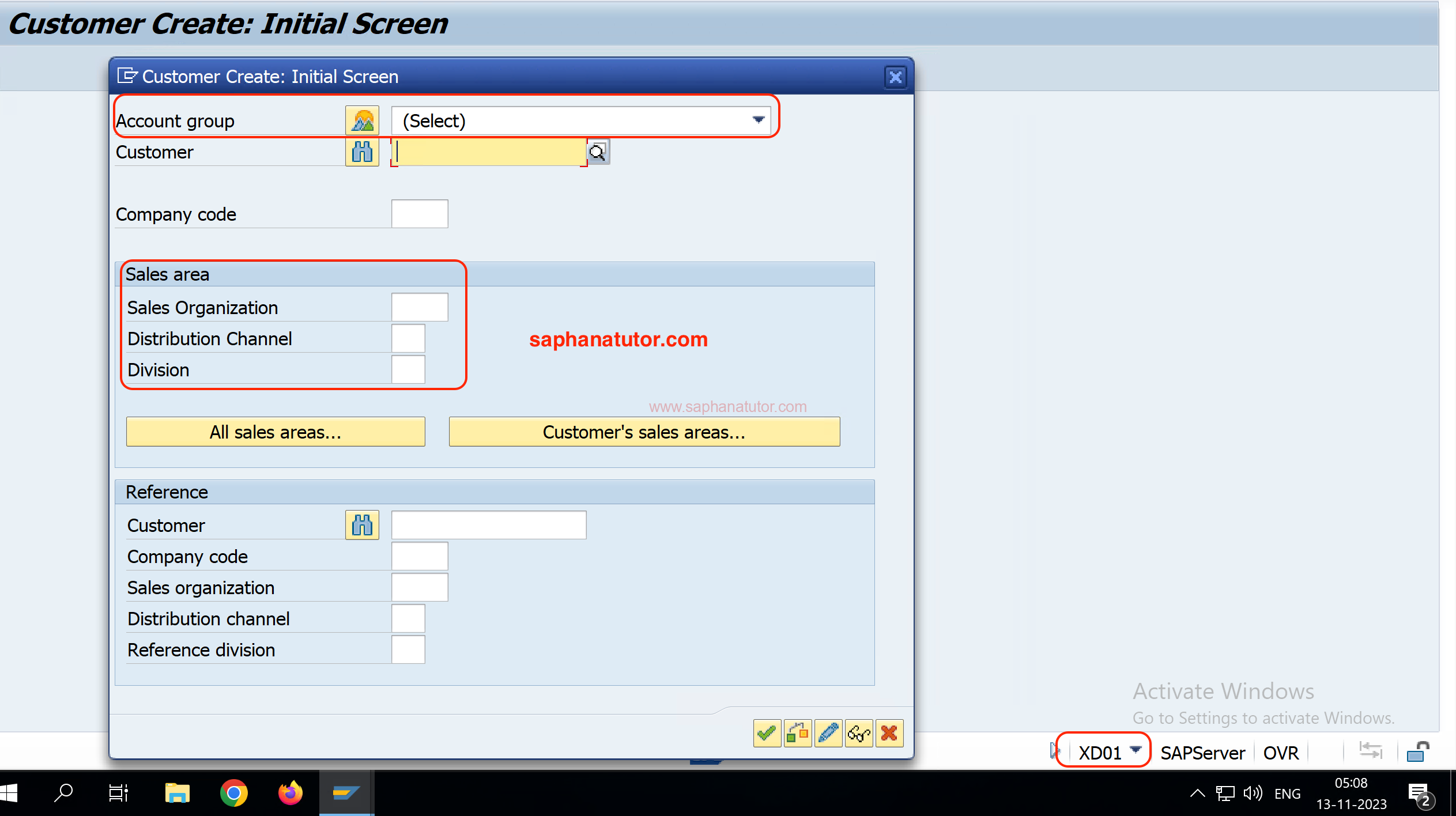Welcome to saphanatutor.com, we are going to understand the basic concepts of Customer Master in SAP Sales and Distribution and also we cover the prerequisites required to create a Customer Master in SAP SD. Certainly! Let’s delve into the concept of the Customer Master in SAP SD (Sales and Distribution).
Understanding the Customer Master in SAP SD:
Imagine the Customer Master in SAP SD as a comprehensive digital records for each customer. It’s like a detailed character profile in a novel, containing all the essential information about the characters – but in this case, the characters are your customers. This profile includes data crucial for processing orders, deliveries, invoices, and payments.
Key Elements of the Customer Master (XD01)
Customer master data is a shared resource, accessible across various departments, including logistics and finance. This data includes details about customers that serve both descriptive purposes and functional control, depending on how it’s utilized. Broadly, customer master data is categorized into three key perspectives. The three views of Customer Master Data in SAP SD are:
- General Data: This includes information that is relevant across the entire organization, such as the customer’s name, address, and contact details. General data is shared across all modules in SAP.
- Company Code Data: Specific to the finance module, this view contains financial information like payment terms, billing information, and credit management details. It’s crucial for managing financial transactions with the customer.
- Sales Area Data: Tailored for the Sales and Distribution (SD) module, this view includes sales-related information such as sales organization, distribution channel, and division. It also covers details like shipping, billing, and pricing conditions pertinent to sales transactions.

Each of these views caters to different aspects of customer information, ensuring that relevant departments within an organization can access and utilize the data they need for their specific functions.
Prerequisites to create a Customer Master (XD01)
Creating a Customer Master in SAP SD requires several important configuration steps to ensure that the system can effectively handle customer data according to the specific needs of the organization. Here are the key configurations:
1. Defining Account Groups : Account Groups are crucial as they dictate the structure of the customer master record. They define which fields will be visible, mandatory, or optional when creating or maintaining customer records. For instance, one account group might require a VAT registration number, while another might not.
2. Maintaining Number Ranges for Customer Accounts : Every customer record needs a unique identifier, and this is where number ranges come in. These ranges are maintained for customer accounts, where each range is assigned to specific account groups. This helps in systematically organizing and identifying customer records. You can have internal number ranges (where the system assigns a number automatically) or external number ranges (where the user assigns a number manually).
3. Assigning Number Ranges to Customer Account Groups : This step involves linking the created number ranges to the respective account groups. This assignment ensures that each customer account within a particular group is given a unique number from the specified range.
4. Creating Customer Master Sales Area Data : Sales Area Data is essential in the customer master and comprises the sales organization, distribution channel, and division. This data is crucial for processing sales orders and is specific to each customer. Configuring this involves defining sales organizations, distribution channels, and divisions, and then linking them together as per the business structure.
5. Defining Partner Determination Procedures : This configuration step involves setting up rules to determine how partners (like sold-to party, ship-to party, bill-to party, etc.) are associated with customer transactions. This procedure helps in identifying different roles that a customer can play in different transactions.
6. Configuring Pricing Procedures : Although indirectly related to the customer master, pricing configurations are important as they determine how pricing will be managed for different customers or customer groups. This includes maintaining condition tables, access sequences, and pricing schemas.
Each of these configuration steps plays a vital role in how customer data is managed and utilized within the SAP SD module, impacting areas from sales order processing to reporting and analytics. Proper configuration ensures not only the accuracy of data but also the efficiency and effectiveness of business processes related to customer management.

Conclusion
In our upcoming series on saphanatutor.com, we will comprehensively cover each step necessary for configuring the Customer Master in SAP SD. From defining account groups to detailed pricing procedures, each tutorial will offer an in-depth exploration and step-by-step guidance. This series is designed to equip both new and experienced SAP professionals with the expertise needed for efficient management of customer data in SAP SD. Stay tuned for a thorough learning experience.
